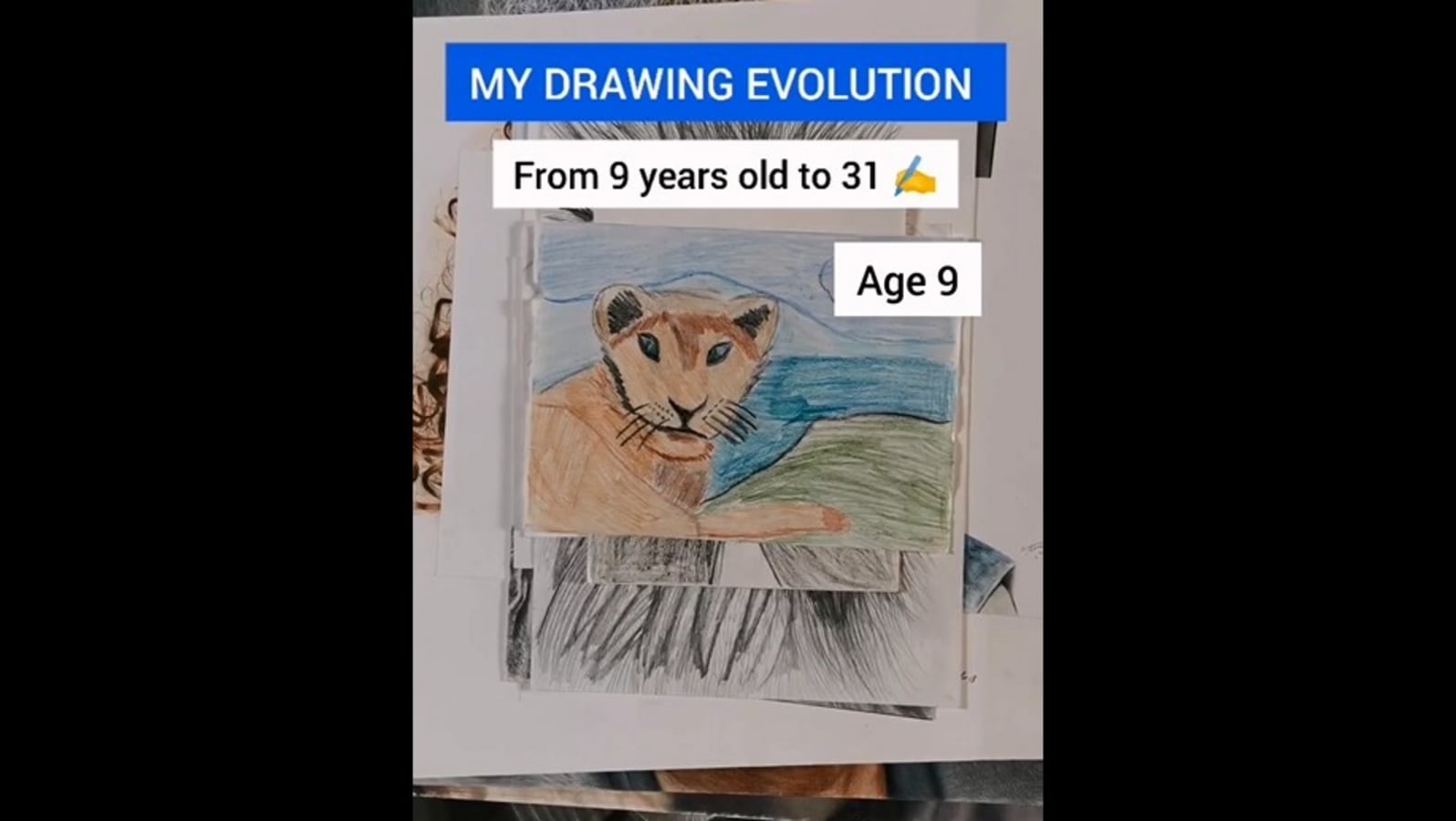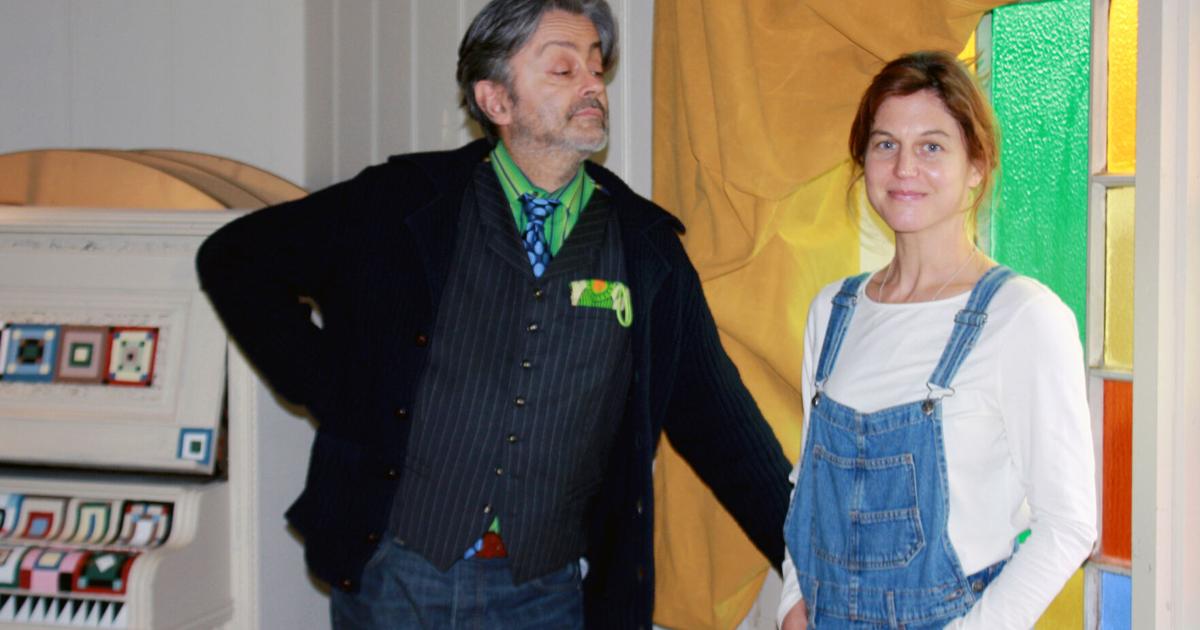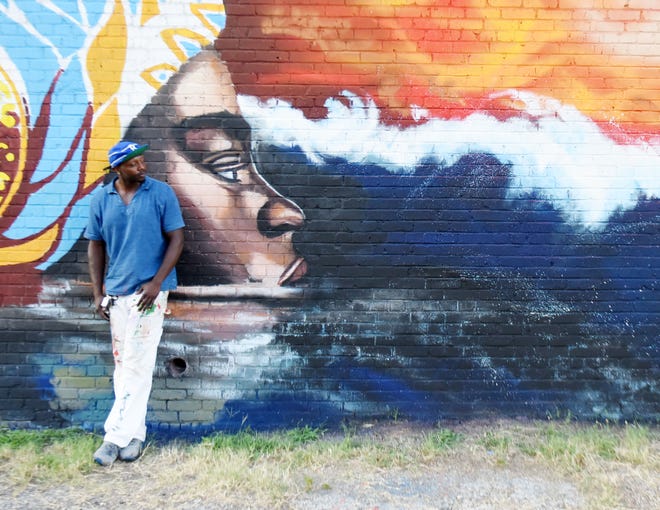NORTH ADAMS — A portrait of Conrad Egyir does not stand still. It is not about likeness or a static representation of a person in time and space. It is a multiverse, on canvases dense with symbols, exploring the relationship between artists, subject and viewer, traveling through cascades of context. Sometimes they even burst into new spaces with extra dimensions.
This is what it means to be a young artist who lives in several spaces at once. Born in Ghana, now living and working in Detroit, Egyir has currently spent the last year as a temporary resident of North Adams. As described in a few words of text on one of his works, this is what it feels like to be between the mountain peaks and the clouds, between the pickaxe and the pillow.
“I know I’m African, I know I’m black, I’m an artist, I’m American by naturalization – I’m all of those things,” Egyir said in an interview ahead of his current show, “Travelog,” which has opened June 10 at MCLA Gallery 51. “The challenge over the years has been to define what home is. I feel like I have my feet in different worlds all the time.”
One of those worlds was the campus of the Massachusetts College of Liberal Arts, where, during the past academic year, he participated in the first Benedetti Teacher Artist Residency, a new program that brings artists to North Adams for teach and create new works.
In a short time he was a working artist, Egyir gained a reputation for his large-scale portraits. Two variations on his theme are included here, large charcoal images that are mostly black and white but with striking pops of color. They are MCLA students he met through his studio assistant and are depicted full-length, seated on a couch with great balance, with images of birds and boats resting on their hands.

A portrait, “Winstons Hill”, is part of “Conrad Egyir: Travelogue”.
When considering models, Egyir usually chooses people he knows or has a personal connection to, so it’s never “just a face in a frame or on a canvas”. His process is to take a lot of photos while his subjects are posing, because he’s posing them around some sort of narrative or concept he wants to capture. Often they answer on their own, sometimes he has to stage it. In the end, he creates something new in the final work, beyond the ideas and the interaction along the way.
The roots of his practice lie in the traditions he grew up in in Ghana, in particular his efforts to find “how to use elements of the visual language of Ghana to create something that everyone can understand”. In the beginning, this meant using Adinkra Symbols, which are symbols and design elements that communicate complex concepts and values from one generation to the next.
It also owed much to the tradition of oral storytelling and the way older people entertained or taught through timeless, shared stories. “Some of the stories I heard when I was a little kid, it took months or years to figure out what the elders were saying,” he said. “Even though they were fun and easy to digest, they were multi-layered and for a long time you could draw stories and ideas from them.”
Since May, MCLA’s Gallery 51 has been showcasing and showcasing talented artists from the Berkshire community and around the world during our live virtual artist segments.
Applying this concept to painting inspired much of his work. In its use of bold colors and layered themes, Egyir’s work has been compared to Kehinde Wiley, who notably painted the official portrait of President Barack Obama in his hyper-detailed and richly textured background. Egyir said he not only admires the use of color and photorealistic precision, but also the universe of meanings Wiley can weave into his images.
With his time at MCLA, Egyir thought about working on a smaller scale to refine and focus his ideas, and finding other elements that can be brought to tell his stories. A series of portraits are lined up filling a series of booths that are built into the room. Each includes a small portrait, often on a canvas with a perforated edge like an old-fashioned postage stamp – a common motif that Egyir has used over the years to evoke postcards and travel. Each has its own cabinet-like space – part of the gallery shelves – with certain objects included, making it feel like an altar and introducing a new dimension to the work. “I thought it was a great way to immerse myself in the installation,” he said. “And the space justified it.”
Each of the images captures a special relationship he has cultivated over the past year. Two are roommates. Joshua Ross, whose show “Come Inside” was at the gallery in the spring. His image with a record player and amidst plates and glasses, Egyir said “he and I share a similar sense of belonging and home”. Next up is Nathaniel Donnett, who also has a residency this year and whose work will be at the gallery in the fall. He is depicted against a bright green natural background and surrounded by stacks of books he recommended to Egyir.
Another space is reserved for Geneviève Gaignard, photographer and collagist, who uses images in different ways in her work, and presented an exhibition, “A Long Way Home” in 2020. It is presented with stacks of Polaroid cameras and images, and Egyir recalled how she used the gallery space by painting the walls and including installation elements. “She activated the space and helped me think about how I could do something similar, instead of just slamming things on the wall.”
The fourth spot is that of Erica Hall, executive director of MCLA Arts and Culture and Gallery 51, who is presented with vines and flowers around her image, as if to celebrate her role in the cultivation and maintenance of this particular garden.

“Love” by Conrad Egyir.
Although still very early in his career, Egyir has attracted serious attention. In 2020, a copy of one of her paintings was included in a meticulously composed scene from Beyoncé’s 2020 musical film and visual album, “Black is King.”
Hall said she first heard of him while he was still in his MFA program at Michigan’s Cranbrook Academy of Art in 2018. “It’s a great way to introduce his work to our community, especially our students,” Hall said.
She also praised his commitment to teaching – Egyir noted that he comes from a family of teachers in Ghana and considered it part of his job. “It gives him the opportunity to get that teaching experience while being a working artist,” she said.
Egyir’s multiple identities as a Ghanaian immigrant, Detroiter and artist create overlaps that he is still exploring. How there is always this repositioning, a fact of identity that also goes back to its roots in Ghana, where not only the place but what tribe your parents belong to maps of where you are “from where”.

Odiases Resolve by Conrad Egyir.
“I explore what it means to be sovereign in your own body, your own space, your own career and your own practice,” he said. “I don’t use any of these as an address.”
And he said he was happy to add the Berkshires to his roster. He once described having car trouble and having to walk from North Adams to Williamstown, and experiencing what happens when you slow down and see the landscape unfold. All the beauty you notice, and the things that remind you of other places, how it reminded him of the mountains of Ghana, between Lake Volta and the border with Togo. And the value of getting out of the car and walking, which Donnett encouraged him to do.
“I learned here to slow down and get to work,” he said.











